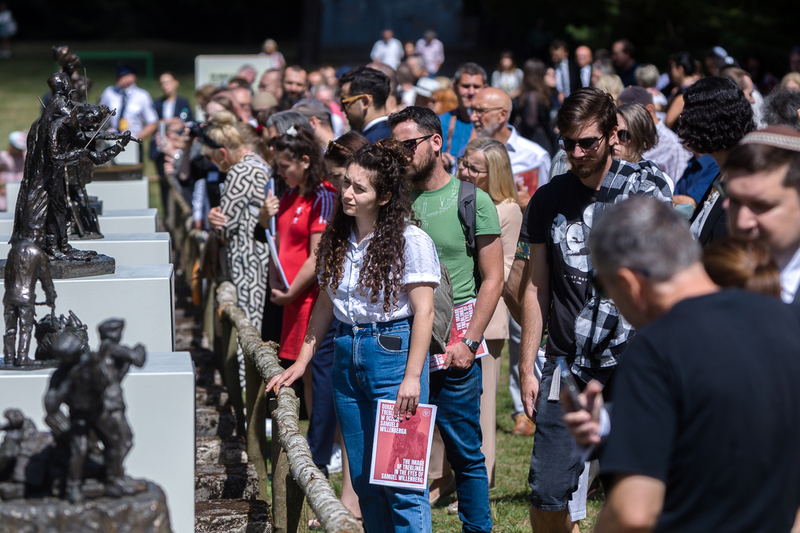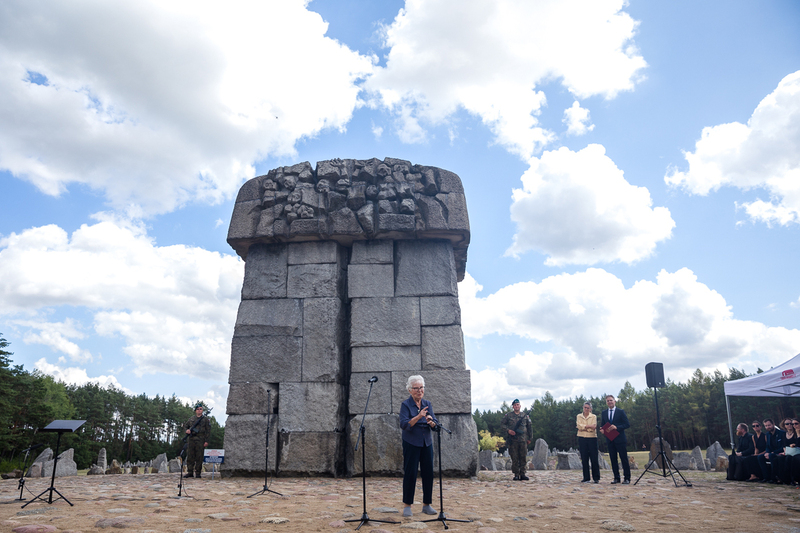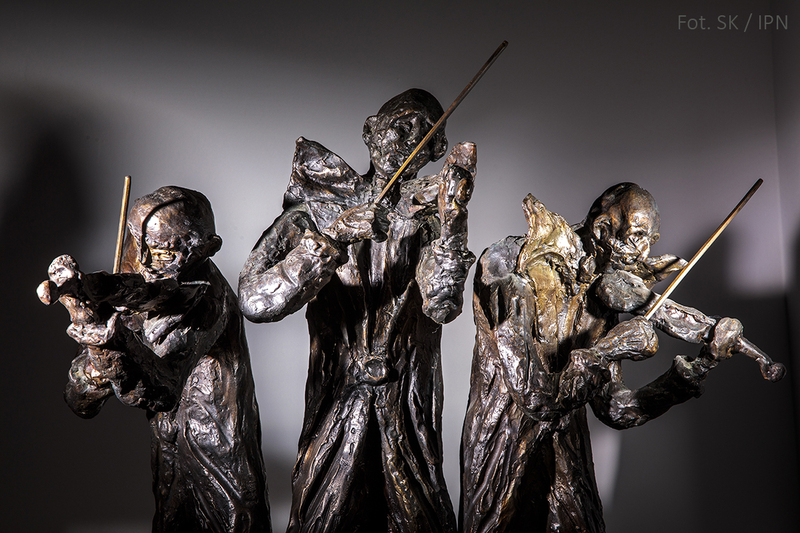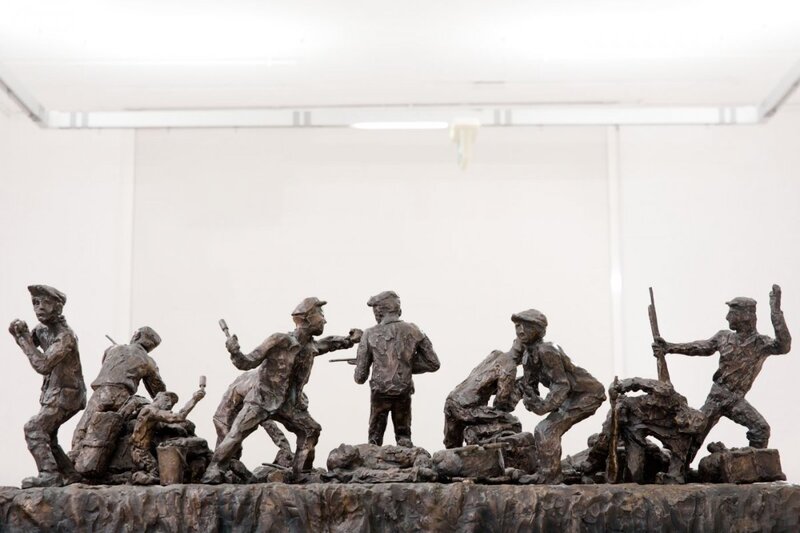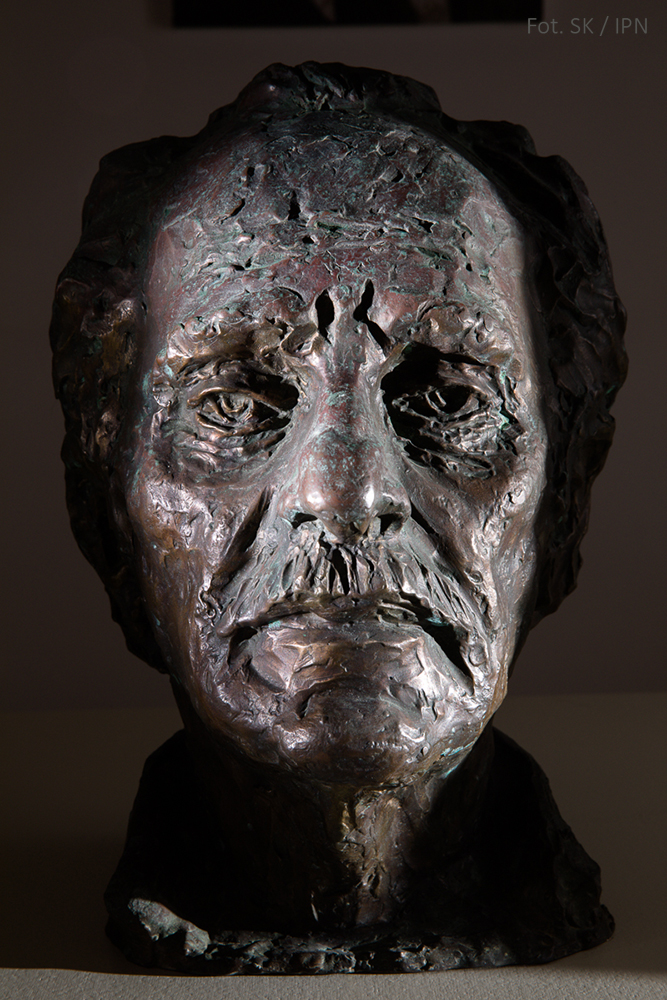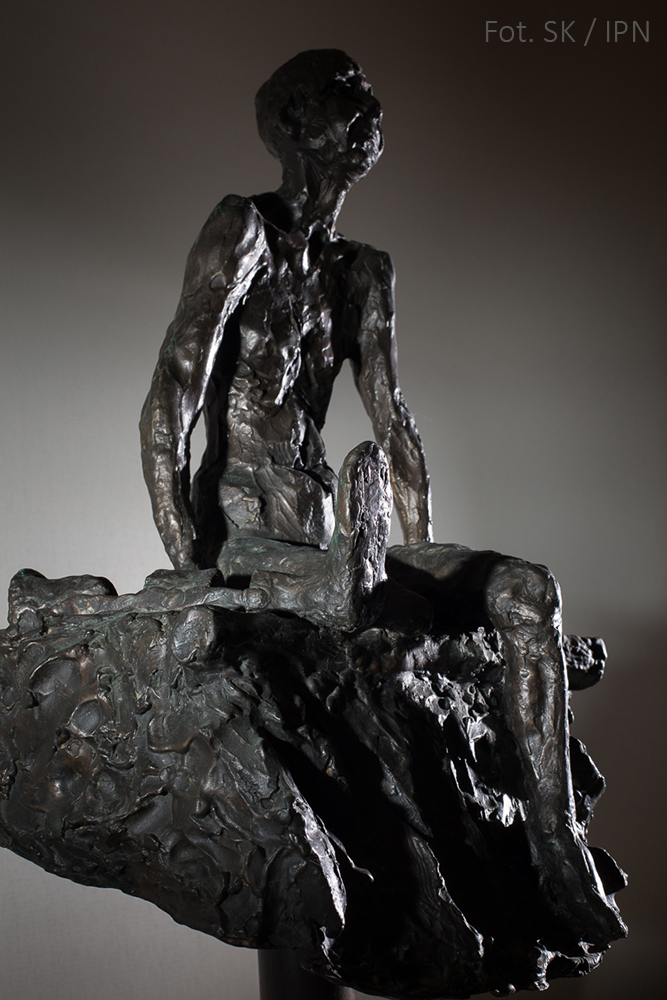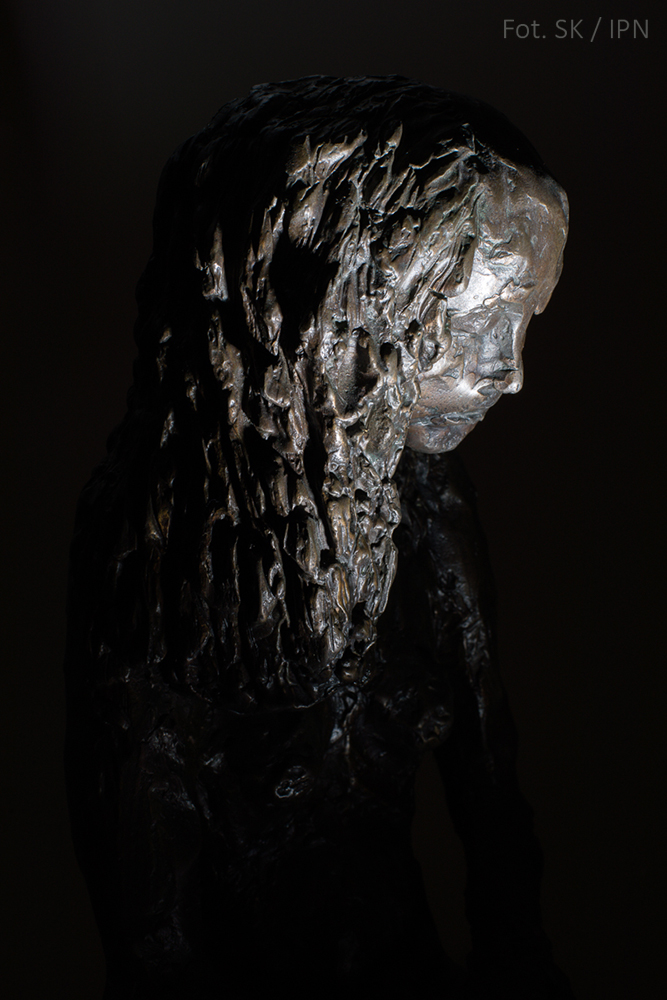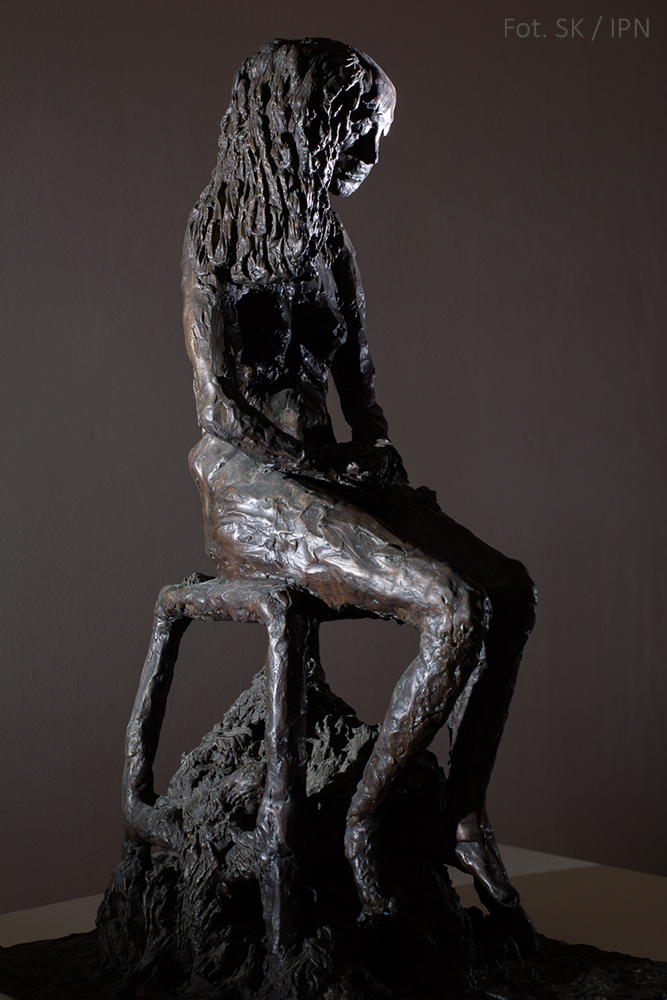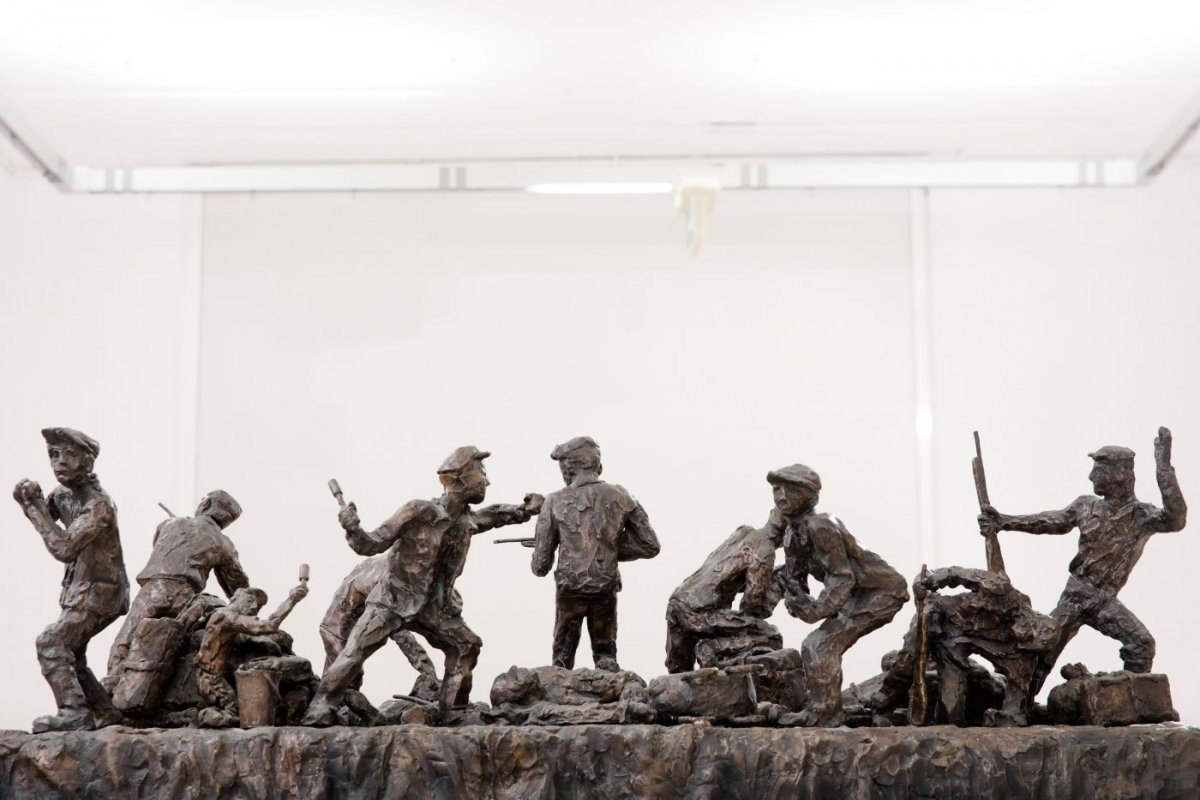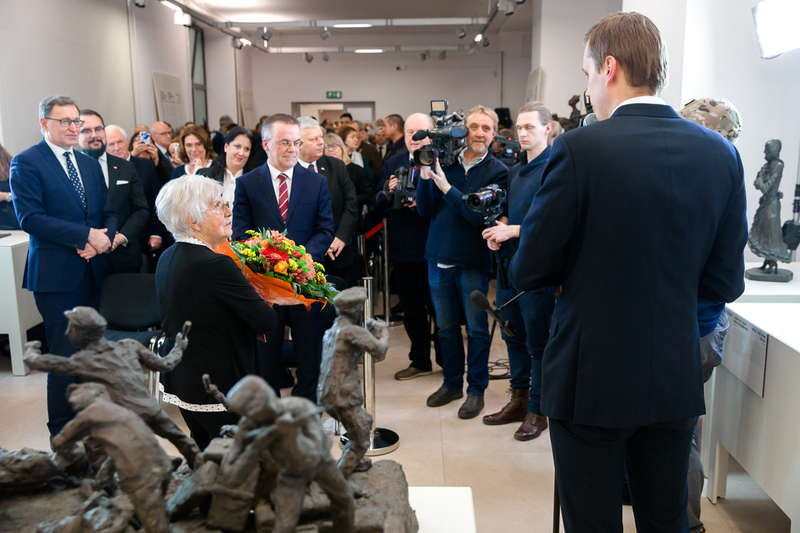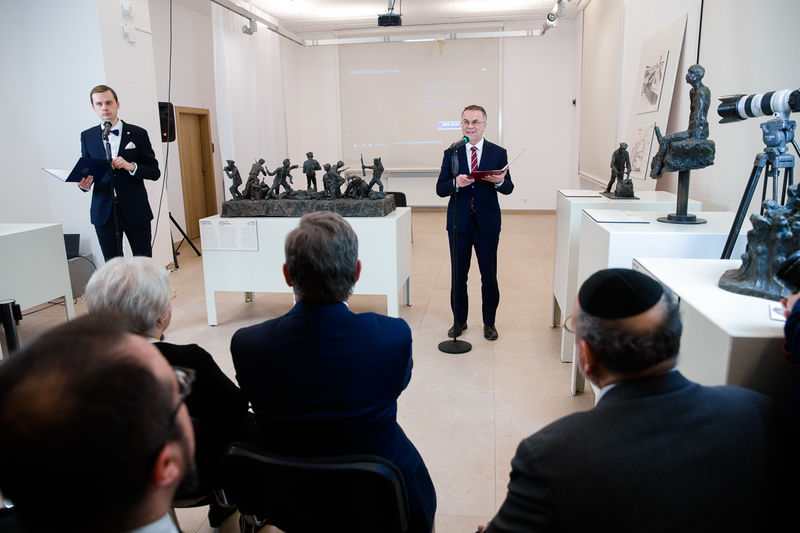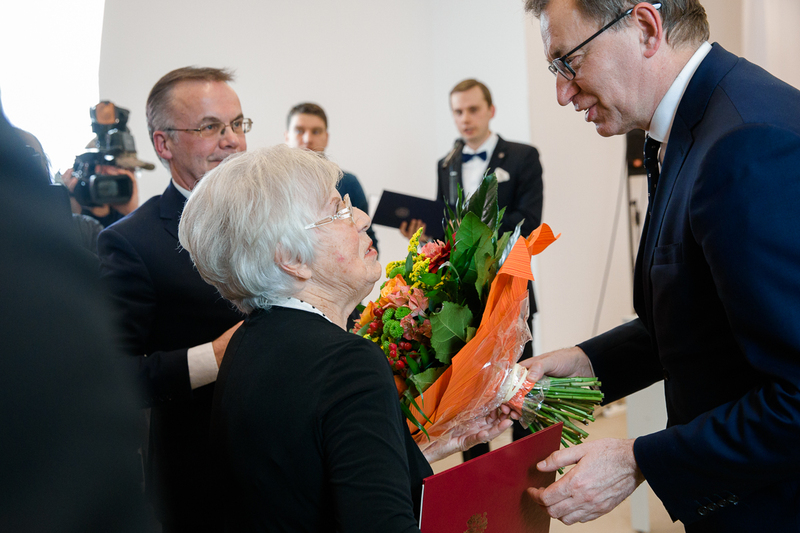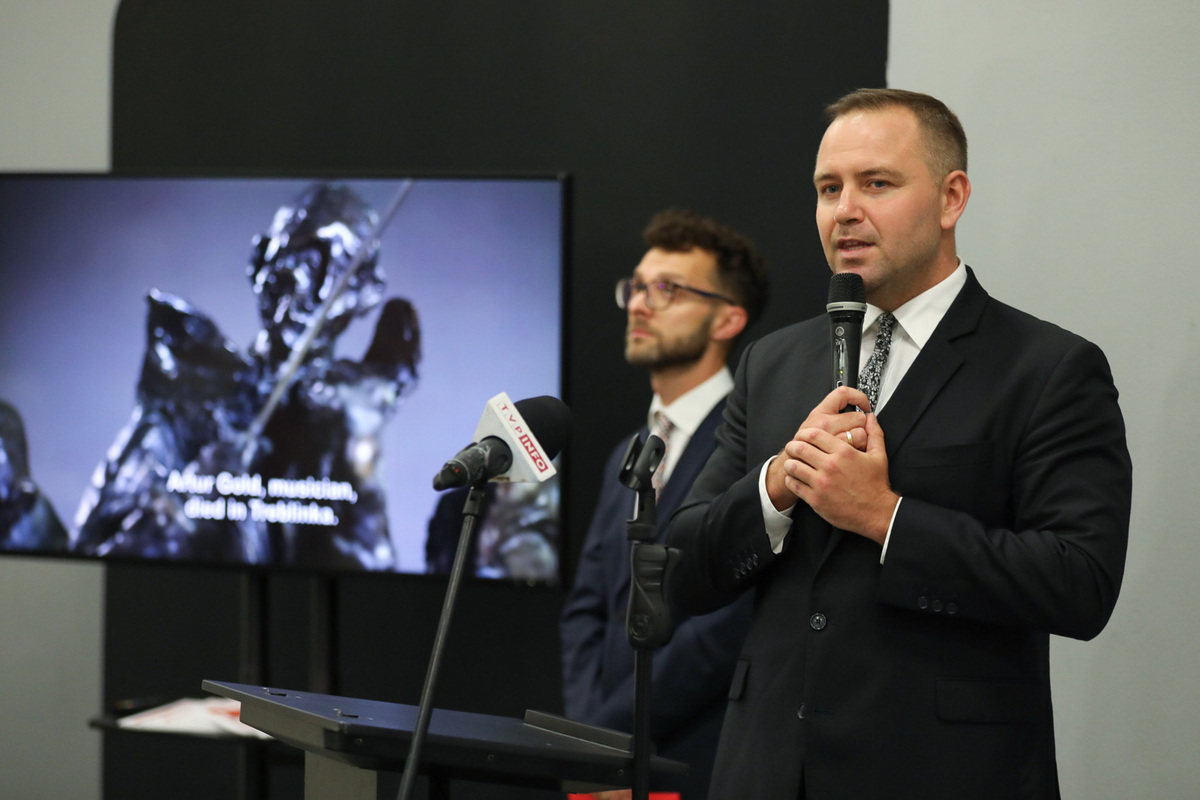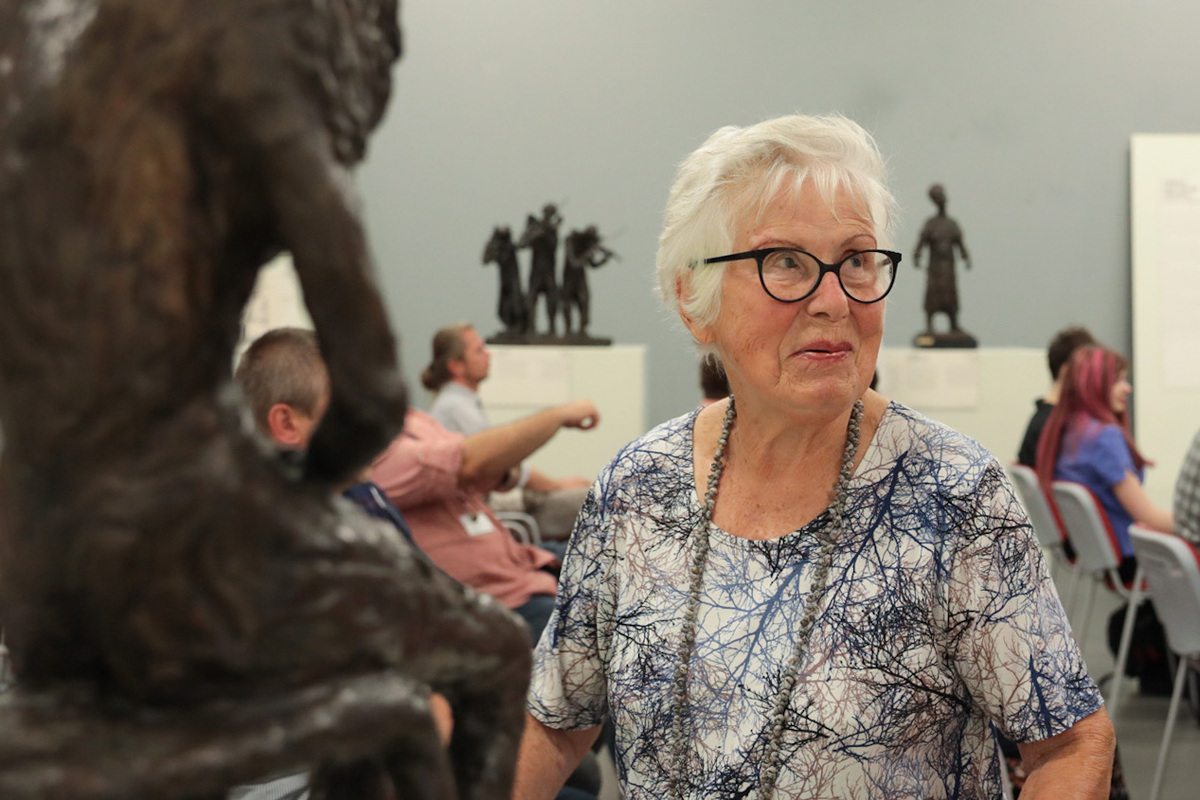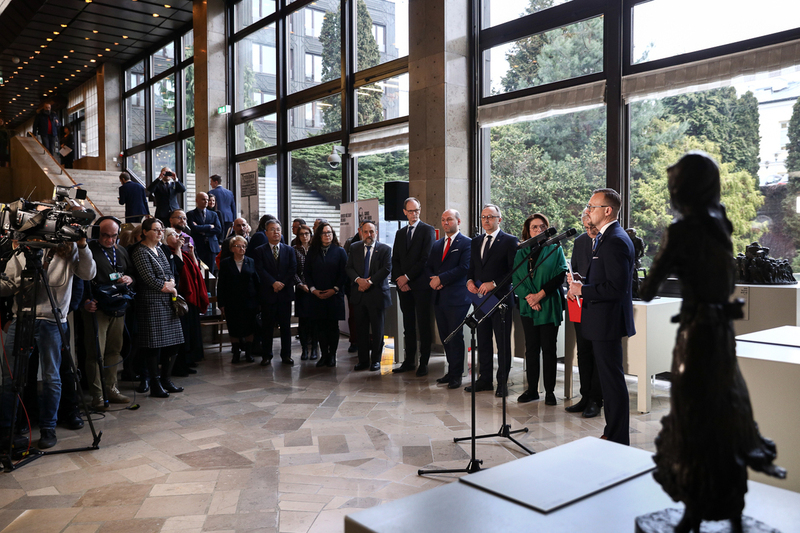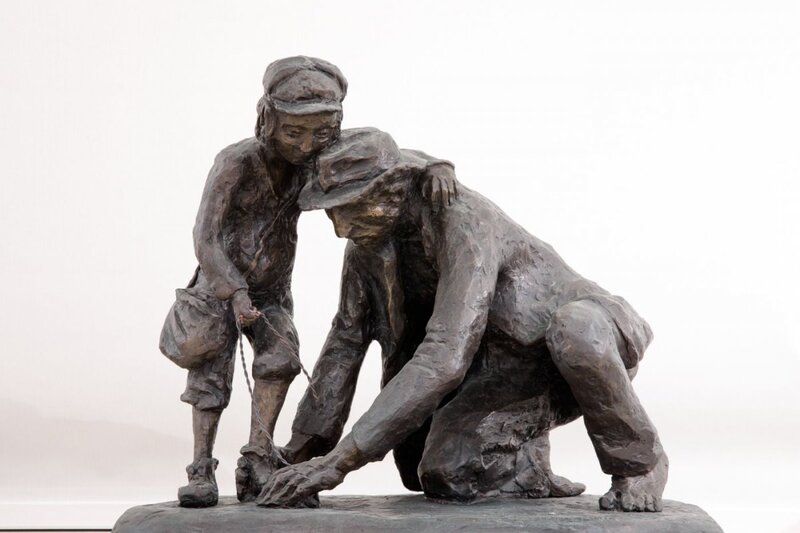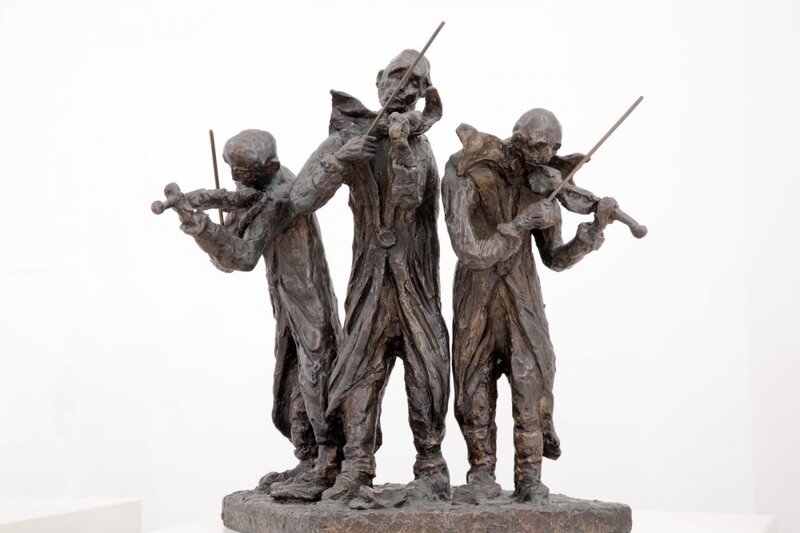The exhibition, under the National Patronage of the President of the Republic of Poland Andrzej Duda to mark the Centenary of Regaining Independence, presents sculptures, drawings, and excerpts of Willenberg's testimony, describing figures and scenes which he remembered and wanted to commemorate. In spite of the perpetrators’ efforts to destroy all traces, the sculptures provide direct evidence of their deeds.
The exhibition of sculptures portraying the author's personal experiences as both a prisoner and a participant of the revolt in the Treblinka German death camp is accompanied by the screening of "Treblinka’s Last Witness", a documentary film produced and screened courtesy of WLRN Public Television for South Florida, which is a first-hand account of Samuel Willenberg’s life as a Jewish prisoner of the death camp.
The aim of the IPN’s nationwide project is not only to educate about the tragedy of the Holocaust, but also to familiarize the younger generation with the author of the sculptures, a Jew from Częstochowa, a soldier of the September campaign, a prisoner of Treblinka, a participant in the camp rebellion, a Warsaw insurgent, and an advocate of reconciliation between Polish and Jewish nations.
After the ceremonial opening of the exhibition in Warsaw on 28 January 2020, with the participation of Ada Krystyna Willenberg, the widow of the artist, the sculptures were presented at the IPN branches in Lublin, Cracow and Kielce, as well as in Gdańsk (at the Museum of the Second World War) and Częstochowa (at the Częstochowa Museum). The Institute of National Remembrance has also prepared a virtual tour of the exhibition supplemented by a voice-over both in Polish and English, as well as touching artistic photographs by Sławomir Kasper (IPN). Quotes from Samuel Willenberg's book Surviving Treblinka in English and Polish were used as descriptions of the exhibits. This has allowed the author’s voice to reverberate fully. It is available at:
https://lastwitness.eu/
Samuel Willenberg was born in 1923 in Częstochowa, Poland, the son of Maniefa, nee Popov, and Perec Willenberg; he had two sisters, his elder Itta and younger Tamara. In October 1942 he arrived at the Treblinka camp in a transport of 6,000 Jews deported from the Opatów ghetto. Most perished immediately; he was the only one who remained alive. Willenberg was in Treblinka until the outbreak of the rebellion on 2 August 1943. He saw with his own eyes the arrival of hundreds of thousands of Jews and thousands of Roma and witnessed them being sent to death in the gas chambers; his own sisters Itta and Tamara also perished there. Willenberg himself suffered humiliation, violence, cruelty and extreme viciousness at the hands of the German SS staff and the Ukrainian “SS-Wachmänner” guards.
Samuel Willenberg was among 200 inmates who on 2 August 1943 succeeded in escaping from the German extermination camp in Treblinka. At the moment of his death in 2016, he remained the last survivor of the rebellion in Treblinka. Samuel Willenberg became the spokesman for good Polish-Jewish relations, speaking openly about both the tragic and beautiful events, linking these two groups of Polish citizens during the criminal German occupation.
For his activities during and after the Second World War Samuel Willenberg received the highest national honors of the Republic of Poland, including the Virtuti Militari, the Cross of Merit with Swords, the Cross of Valour, the Warsaw Uprising Cross, the Order of Merit of the Republic of Poland, the Order of Polonia Restituta, and the Polish Army Medal.
Treasures of memory from Treblinka
The official opening of the “Treblinka in the eyes of Samuel Willenberg” exhibition – Warsaw – 28 January 2020
Workshops for students - Art from the Holocaust
"The Image of Treblinka in the Eyes of Samuel Willenberg" exhibition – Lublin, 16 June – 10 July 2020
”The Image of Treblinka in the Eyes of Samuel Willenberg” exhibition – Gdańsk, 15 July – 13 August 2020
The exhibition of Samuel Willenberg’s 15 bronze sculptures depicting life in the German death camp in Treblinka, can be seen at the IPN’s "Przystanek Historia" Educational Center in Cracow until 13 September 2020.
Samuel Willenberg's legacy in Poland
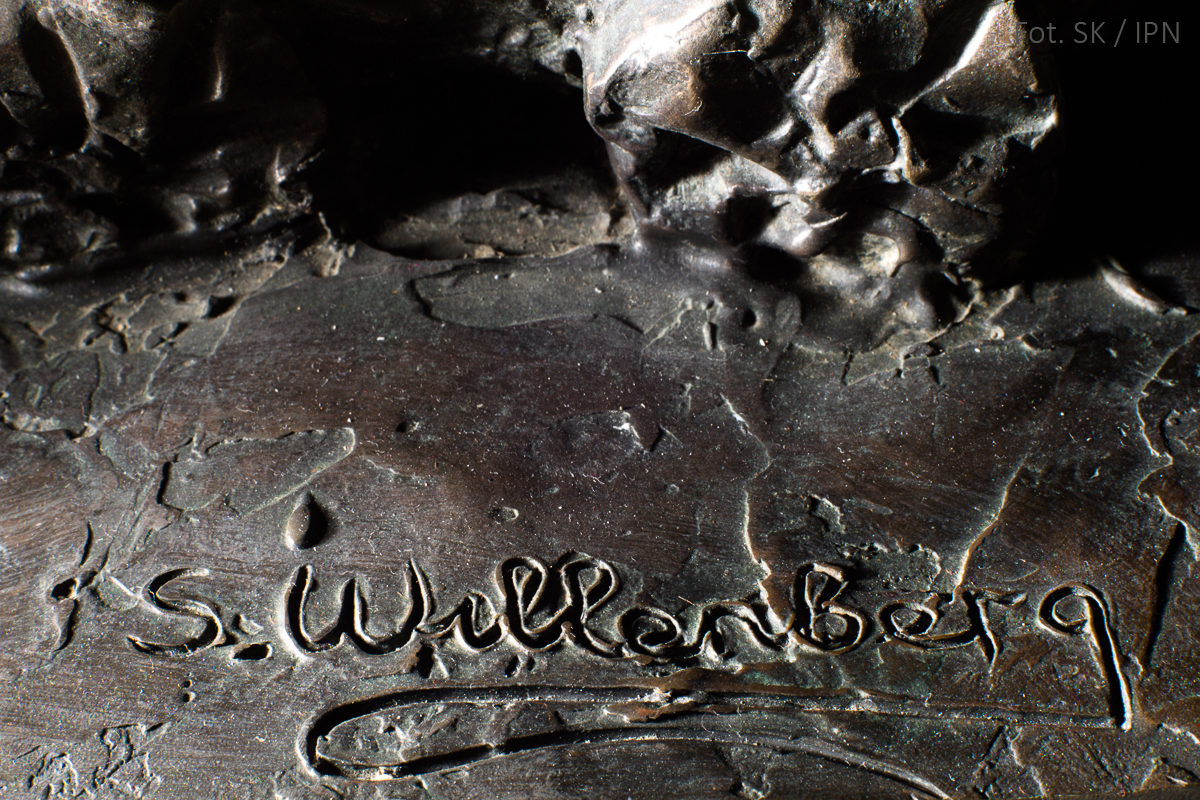
In early 2021, the exhibition of the Institute of National Remembrance appeared in the Cultural Center in Opatów, which, after Częstochowa and Treblinka, remains the most significant place in the artist's life. It was here that before the war, his father Perec Willenberg created paintings on the synagogue walls. It also housed the ghetto established by the Germans during the war, from which, in October 1942, young Samuel was sent to the Treblinka extermination camp.
"The Image of Treblinka in the Eyes of Samuel Willenberg" exhibition now to be seen in Chmielnik’s old synagogue
After two months in Opatów, the legacy of Samuel Willenberg, an outstanding artist from Israel, found its place round the only glass bimah in the world at the Education Museum Centre "Świętokrzyski Sztetl" (the former synagogue in Chmielnik).
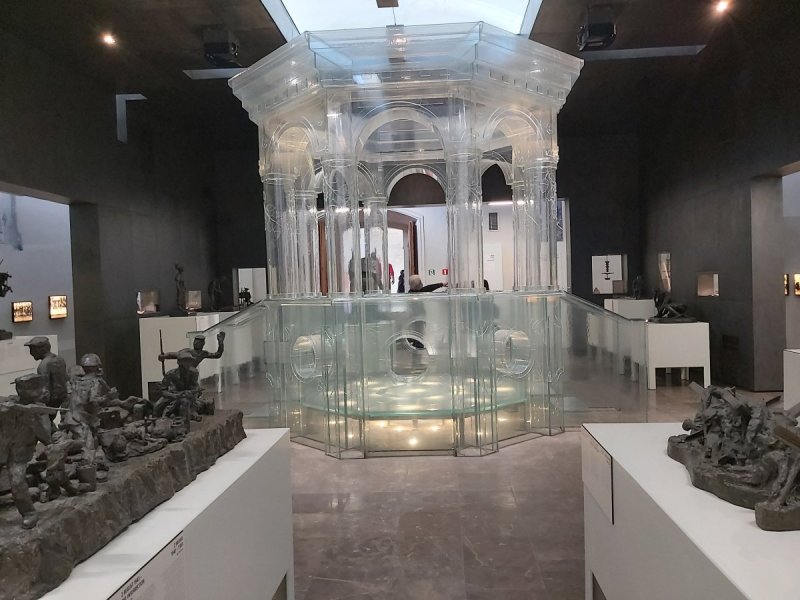
Samuel Willenberg’s sculptures are now being displayed at the State Museum at Majdanek
The exhibition was officially opened by the Director of the State Museum at Majdanek, Tomasz Kranz, Ph.D., on 3 July 2021. Ada Krystyna Willenberg, who took part in the event online from Israel, told the gathered guests about her late husband, his experiences at the German death camp in Treblinka and his later artistic work.Art historian, Prof. Lechosław Lameński, who also took part in the opening of the exhibition, emphasized the artistic value of Samuel Willenberg’s sculptures as well as the powerful emotions they evoke.
The exhibition is on display at Majdanek until 29 August 2021, from Tuesday to Sunday from 9.00 am to 5.00 pm. It will later be presented in the branches of the State Museum at Majdanek - from 1 September at the Museum and Memorial in Bełżec, and from 14 October at the Museum and Memorial in Sobibór.
-
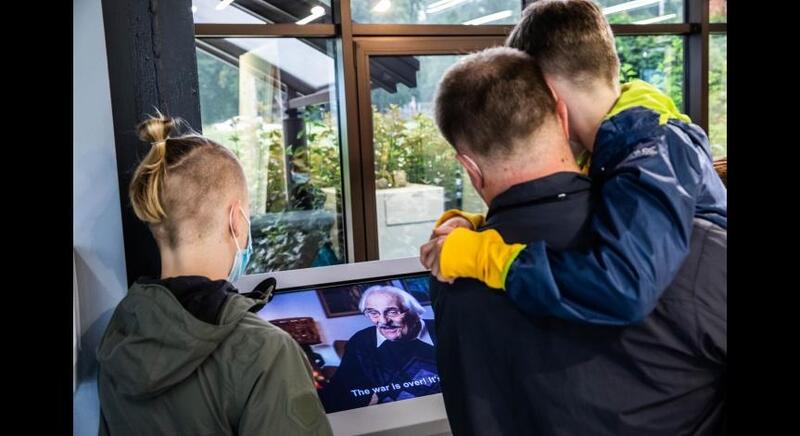
Samuel Willenberg’s sculptures at the State Museum at Majdanek; Photo: State Museum at Majdanek -
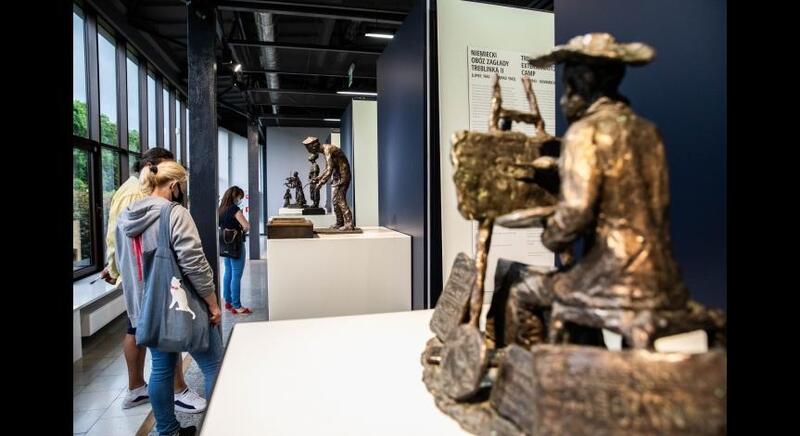
Samuel Willenberg’s sculptures at the State Museum at Majdanek; Photo: State Museum at Majdanek -
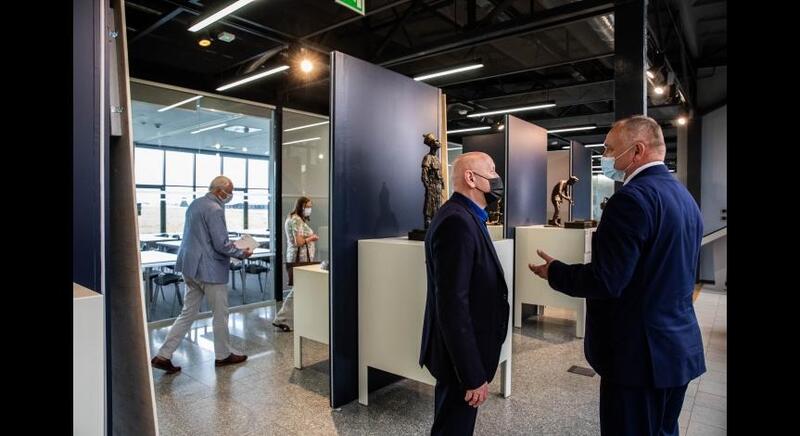
Samuel Willenberg’s sculptures at the State Museum at Majdanek; Photo: State Museum at Majdanek -
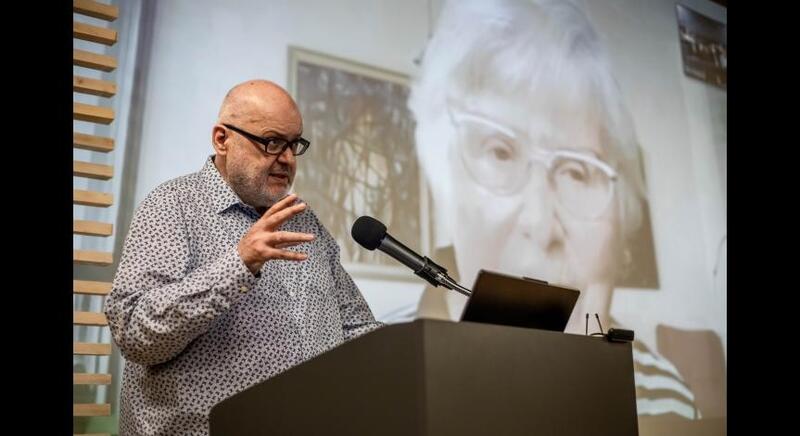
Samuel Willenberg’s sculptures at the State Museum at Majdanek; Photo: State Museum at Majdanek -

Samuel Willenberg’s sculptures at the State Museum at Majdanek; Photo: State Museum at Majdanek -
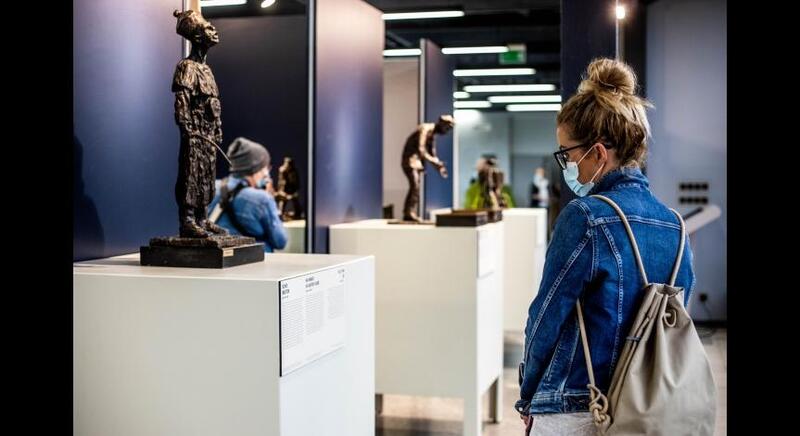
Samuel Willenberg’s sculptures at the State Museum at Majdanek; Photo: State Museum at Majdanek -
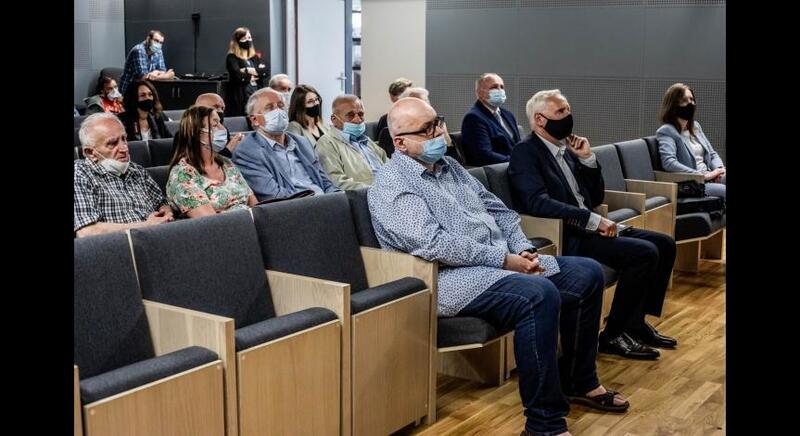
Samuel Willenberg’s sculptures at the State Museum at Majdanek; Photo: State Museum at Majdanek -
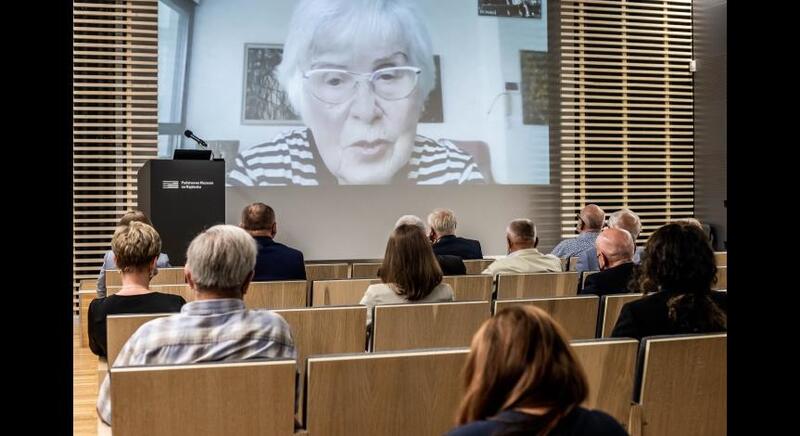
Samuel Willenberg’s sculptures at the State Museum at Majdanek; Photo: State Museum at Majdanek -
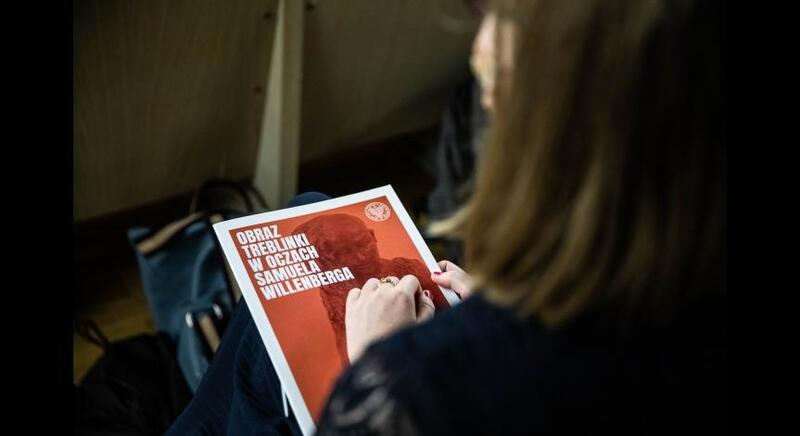
Samuel Willenberg’s sculptures at the State Museum at Majdanek; Photo: State Museum at Majdanek -
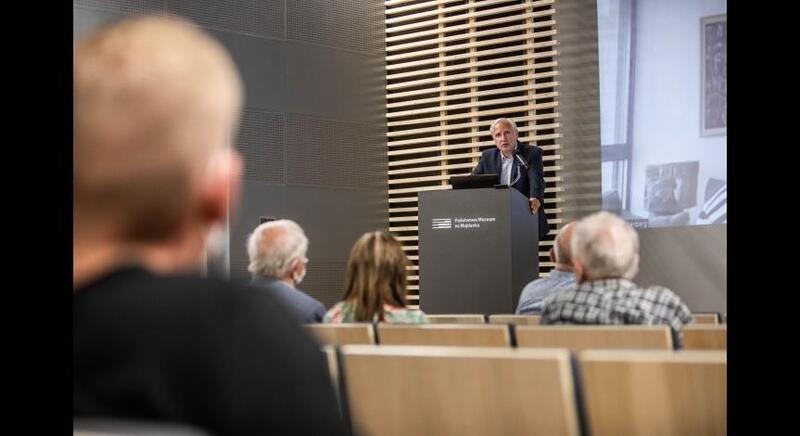
Samuel Willenberg’s sculptures at the State Museum at Majdanek; Photo: State Museum at Majdanek -
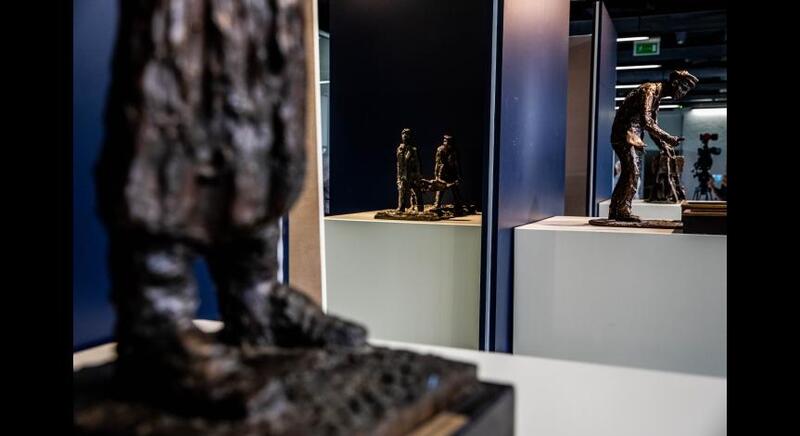
Samuel Willenberg’s sculptures at the State Museum at Majdanek; Photo: State Museum at Majdanek -
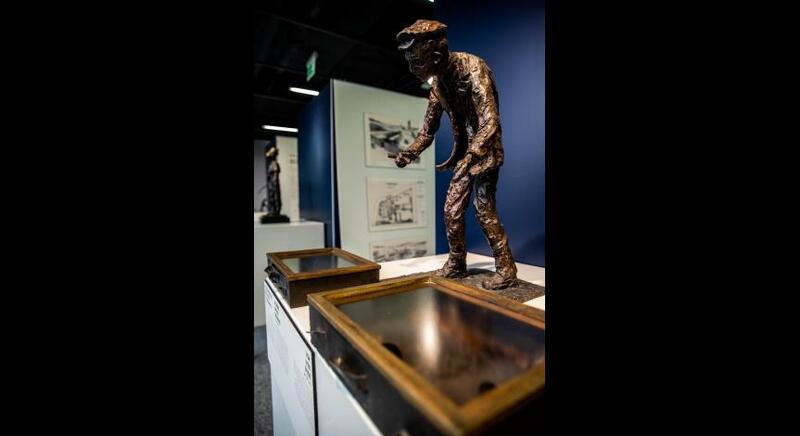
Samuel Willenberg’s sculptures at the State Museum at Majdanek; Photo: State Museum at Majdanek -
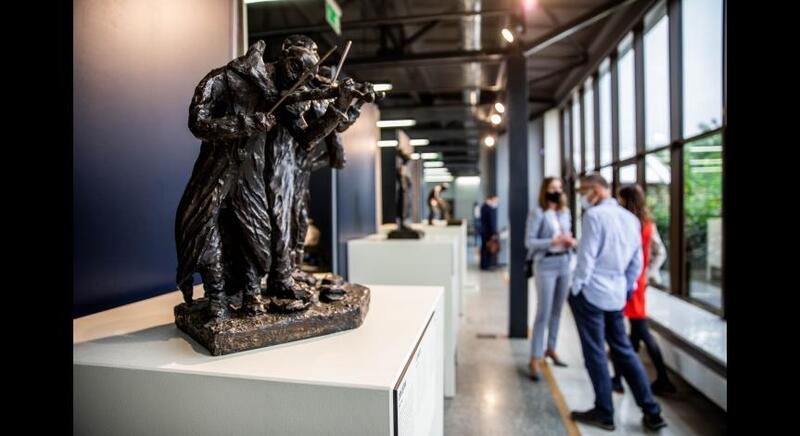
Samuel Willenberg’s sculptures at the State Museum at Majdanek; Photo: State Museum at Majdanek -
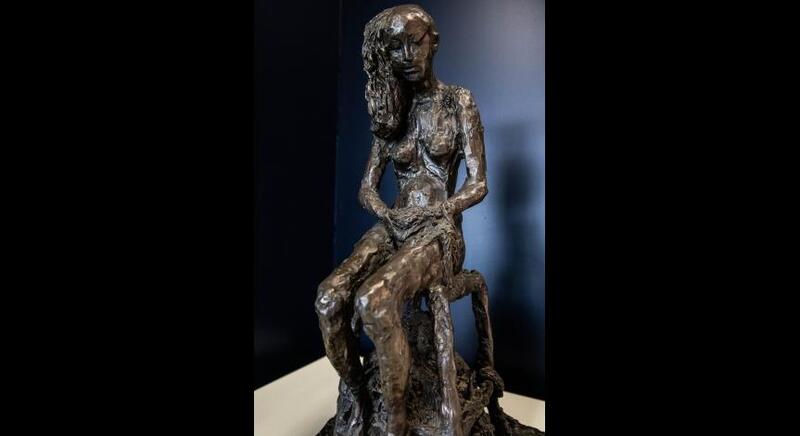
Samuel Willenberg’s sculptures at the State Museum at Majdanek; Photo: State Museum at Majdanek
Samuel Willenberg's sculptures are now on display at the Museum and Memorial Site in Bełżec
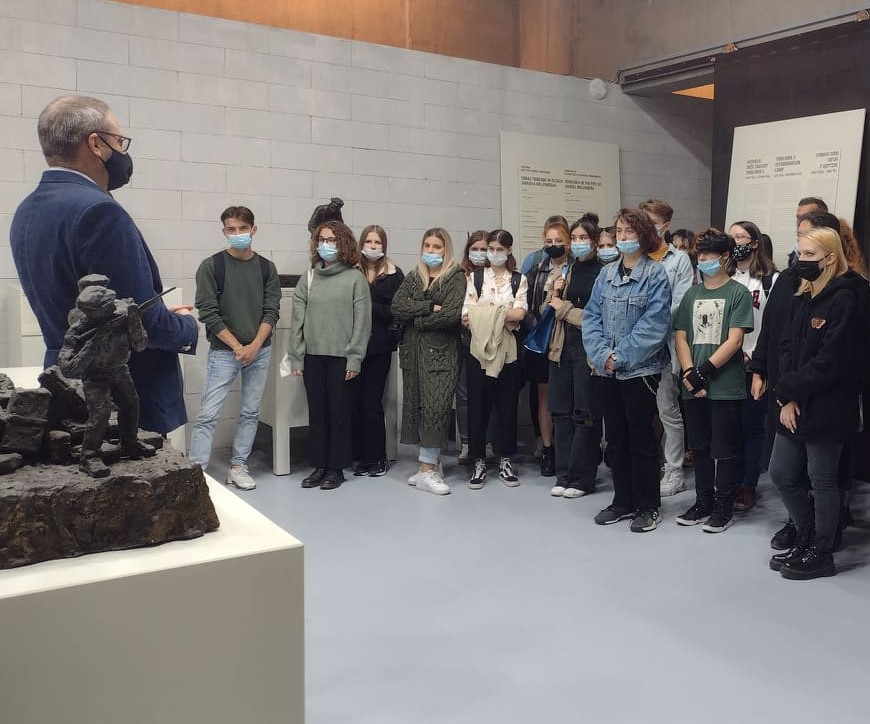
The opening of "The Image of Treblinka in the Eyes of Samuel Willenberg" exhibition at the Museum and Memorial Site in Bełżec took place on 6 September 2021. The participants of the meeting were, among others, students and teachers of the Bernard Morando State Secondary School of Fine Arts in Zamość. Apart from viewing the exhibition, the students also took part in the workshops entitled "Holocaust Testimonies – artifacts discovered during archaeological works on the site of the former death camp in Bełżec" and "The story of a certain ghetto. The Przemyśl ghetto as an example of a closed Jewish district during the German occupation”.
The legacy of Samuel Willenberg in Warsaw and Opole
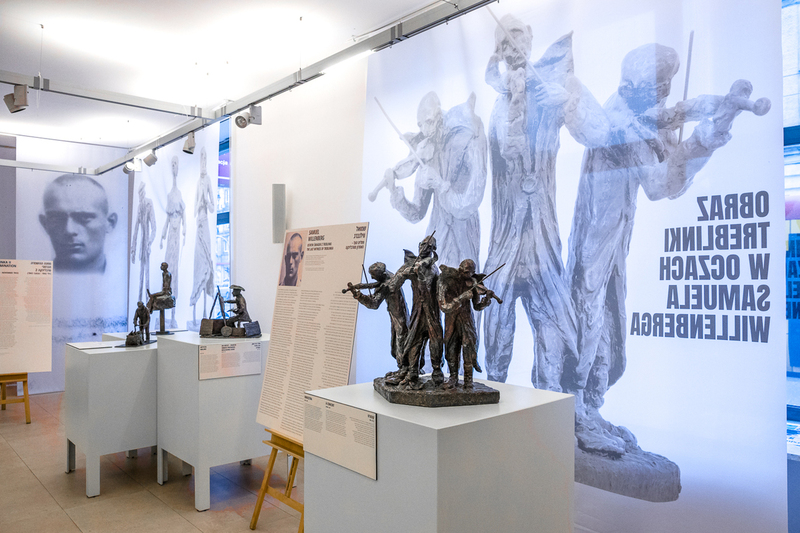
On this year's Holocaust Remembrance Day, the Institute of National Remembrance encourages you to visit the exhibition "The Image of Treblinka in the Eyes of Samuel Willenberg" commemorating those murdered in the Treblinka extermination camp. Twelve exhibits can be seen at the “History Point” Janusz Kurtyka Educational Center at 21/25 Marszałkowska street in Warsaw, and three ̶ at the Central Museum of Prisoners-of-War in Opole, where the ceremonial opening is taking place on 27 January.
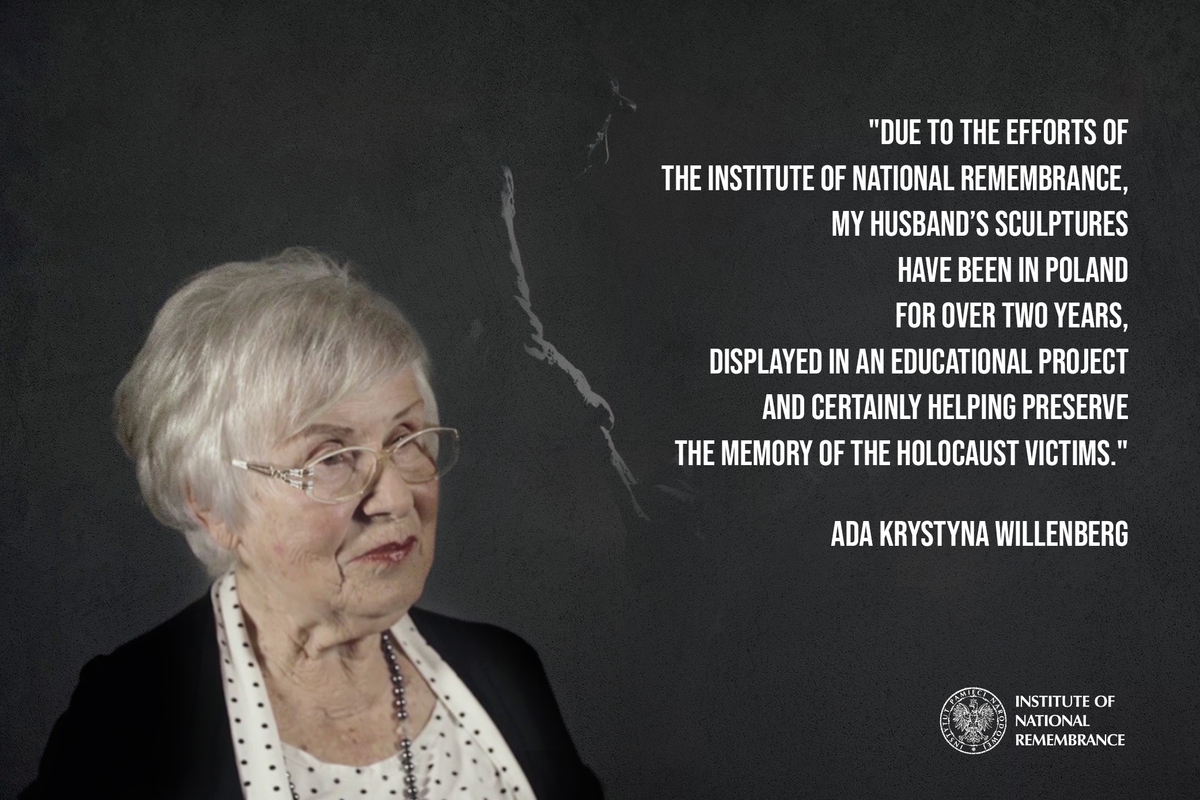
"The exhibit demonstrates what kind of things inhumanity and intolerance can lead to. Samuel was not like any other man: he feared no danger, and, when necessary, was the first to fight. This is best evidenced by his volunteering for the army in 1939, even though at 16 he was too young for military service; he was a great Polish patriot. Following the revolt in Treblinka, of which he was a very active participant, he contacted the Polish underground, and at first, got involved in diversion and sabotage in the streets of Warsaw. The moment the Warsaw Uprising broke out, he went in combat as a Home Army soldier, and then transferred to PAL Polish People’s Army. When the Uprising fell, he joined a partisan unit and fought in the Kampinos forest. After the war, Samuel once said that he’d made through it all and was happy. What he meant, I think, was that you should never give up: overcome whatever setbacks life throws at you. In the first place, I want to give my sincere thanks to the exhibitor and all of you in the audience, people who in such a difficult time and cold weather left their warm homes and came to see Samuel’s art."
Ada Krystyna Willenberg
The Offical opening of “The Image of Treblinka in the Eyes of Samuel Willenberg” exhibition in Wrocław, 27 July 2022
Ada Krystyna Willenberg
The opening of “The Image of Treblinka in the Eyes of Samuel Willenberg” exhibition in the Museum of the Silesian Piasts, Brzeg, 1 September 2022.
According to the agreement between the Institute of National Remembrance and the Museum of Silesian Piasts, the "Image of Treblinka" exhibition was opened in the city of Brzeg. The IPN was represented by Iwona Demczyszak, Ph.D., Deputy Director of the IPN Sub-Branch in Opole, and Marcin Marczak, Deputy Director of the IPN Branch in Wroclaw. The exhibition is open for visitors from 1 September until 15 October 2022.
“The Image of Treblinka in the Eyes of Samuel Willenberg” exhibition displayed in the Polish Seym on the occasion of the International Holocaust Remembrance Day.
A Fighter in Hell and His Unusual Sculptures
As a prisoner at Treblinka, Samuel witnessed the death in the gas chambers of his two beloved sisters, Itta and Tamara, among countless others. In his sculptures, the most poignant of these individual tragedies are brought back vividly to life. Like Polansky’s “The Pianist”, the film focuses on one man’s personal odyssey to reflect the enormity of the genocide inflicted upon Poland’s 3.5 million Jews, at the time the world’s largest Jewish community, seven times greater than the Jewish population of pre-war Germany.
Samuel’s story is one of survival against staggering odds and, though heart-rending and horrifying, it is ultimately one of triumph. WLRN
As an expression of respect for St. John Paul II, after the Pope's death, Willenberg made his sculpture. The Institute of National Remembrance, in cooperation with the “Dobry Grunt” Foundation, added the work devoted to the Holy Father to the exhibition during its presentation in Poland.
Samuel Willenberg - Everybody’s hero
-

AN ARTIST- PAINTER INMATE PREPARING MISLEADING SIGNS, BRONZE 2001 -
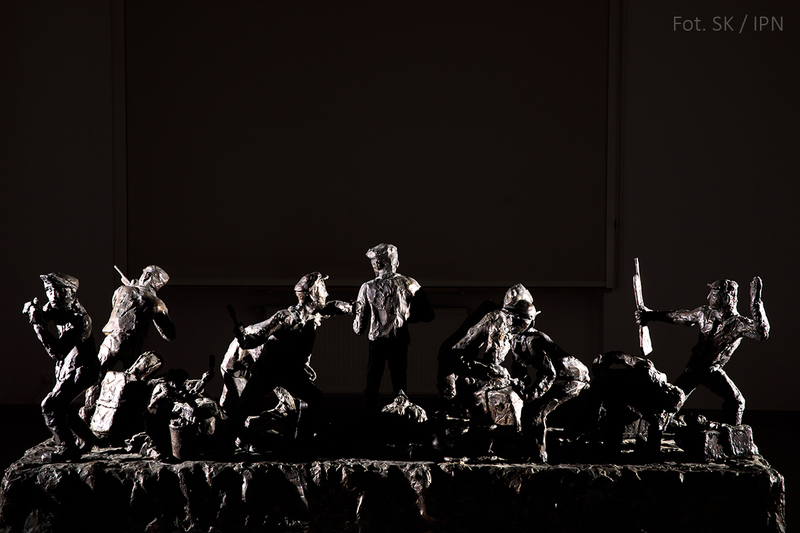
2 AUGUST 1943 - THE INSURRECTION, BRONZE 2002-2003 -
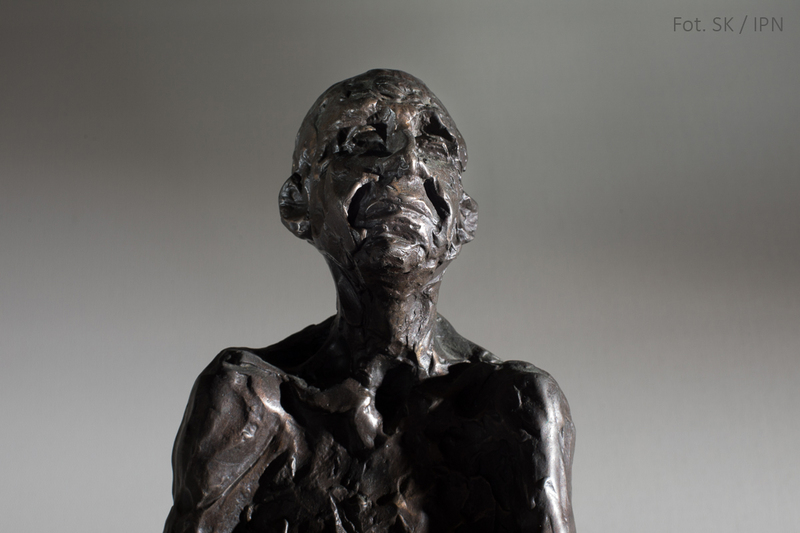
A CRIPPLED JEW AT THE ENTRANCE TO THE "LAZARETT", BRONZE 2002 -
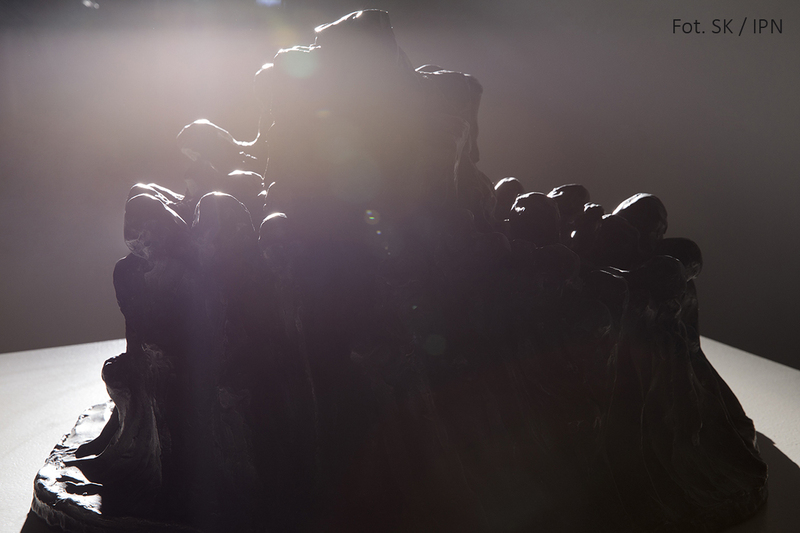
UNDRESSED WOMEN ON THEIR WAY TO THE GAS CHAMBER, BRONZE 2000 -
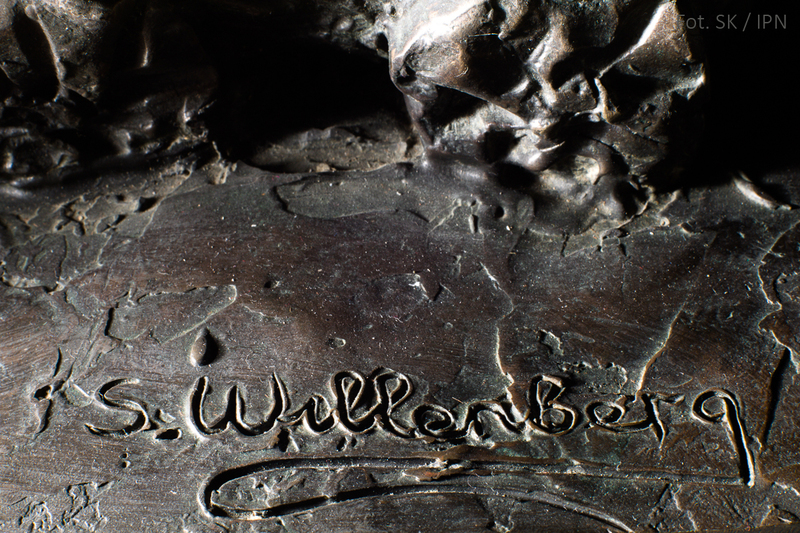
WILLENBERG'S SIGNATURE IN BRONZE -
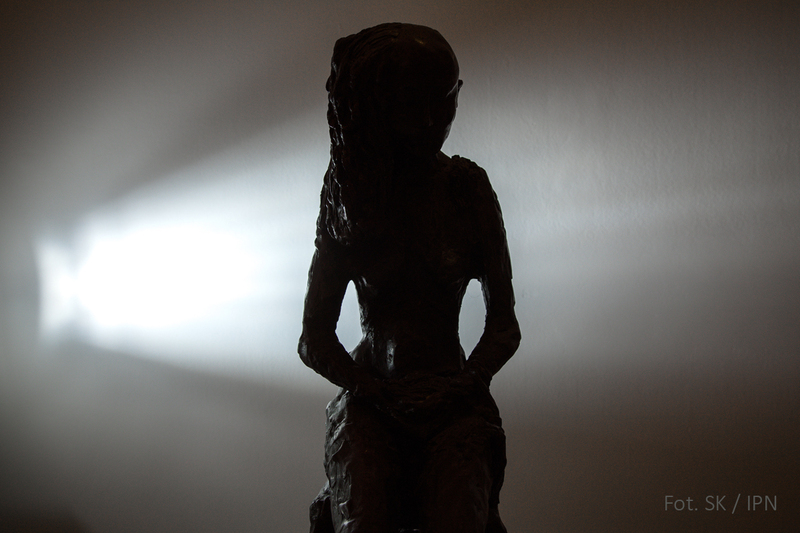
HOMAGE TO RUTH DORFMAN, BRONZE 2001 -
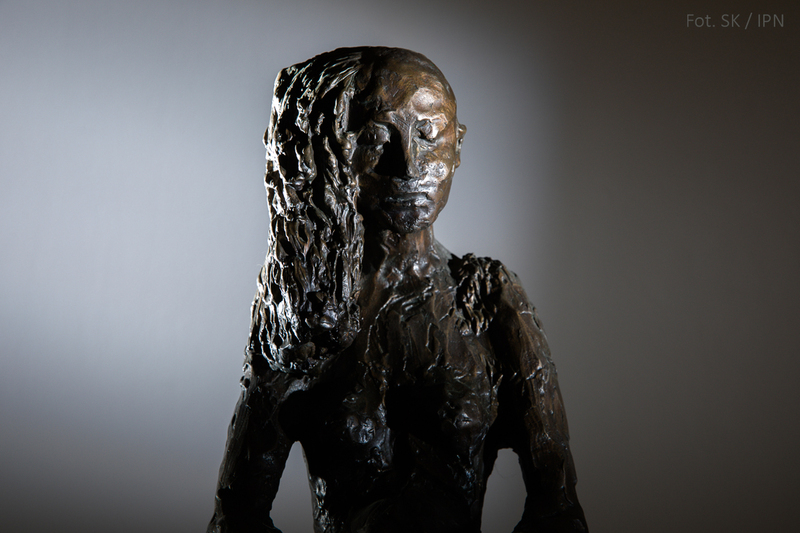
HOMAGE TO RUTH DORFMAN, BRONZE 2001 -
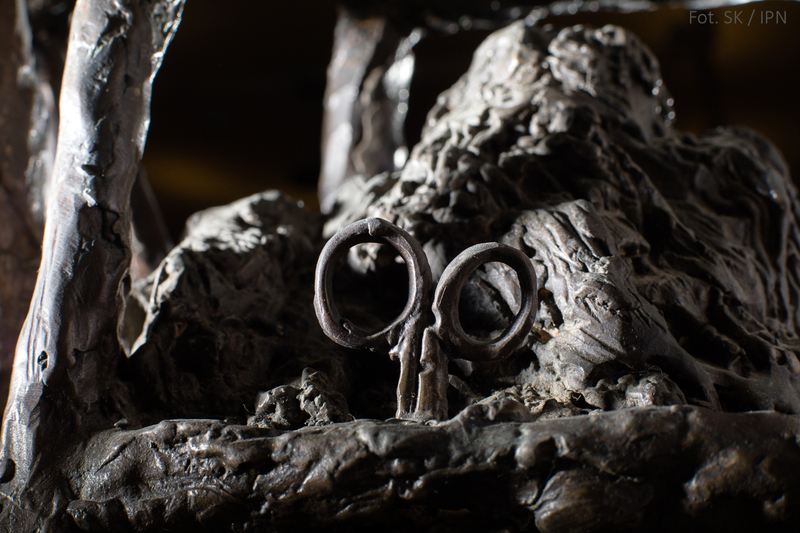
HOMAGE TO RUTH DORFMAN, BRONZE 2001 -

AN INMATE COLLECTING BOTTLES , BRONZE 2000 -
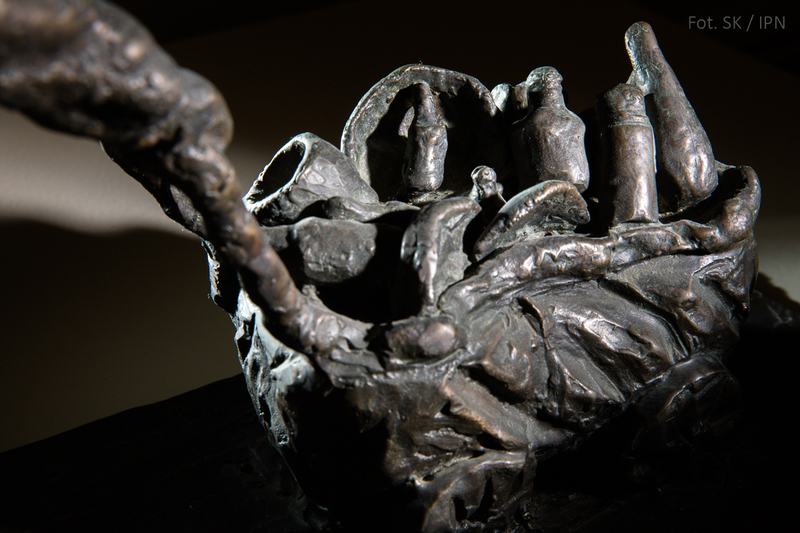
AN INMATE COLLECTING BOTTLES , BRONZE 2000 -
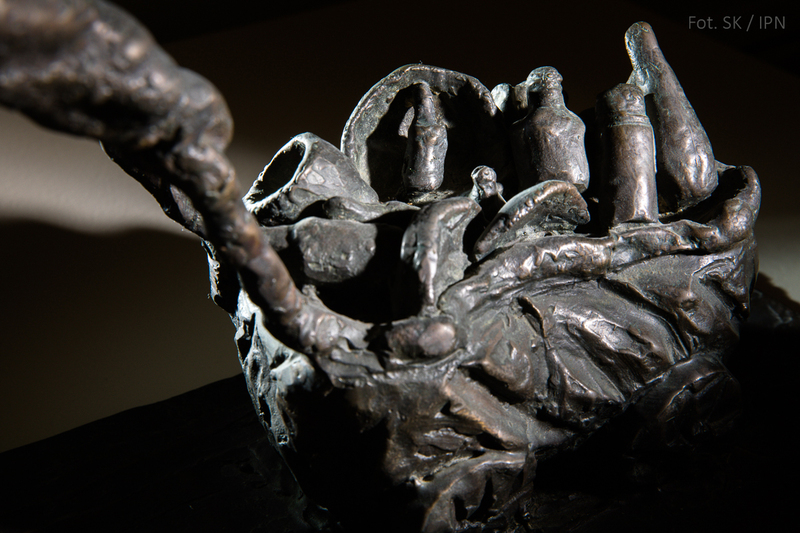
AN INMATE COLLECTING BOTTLES , BRONZE 2000 -
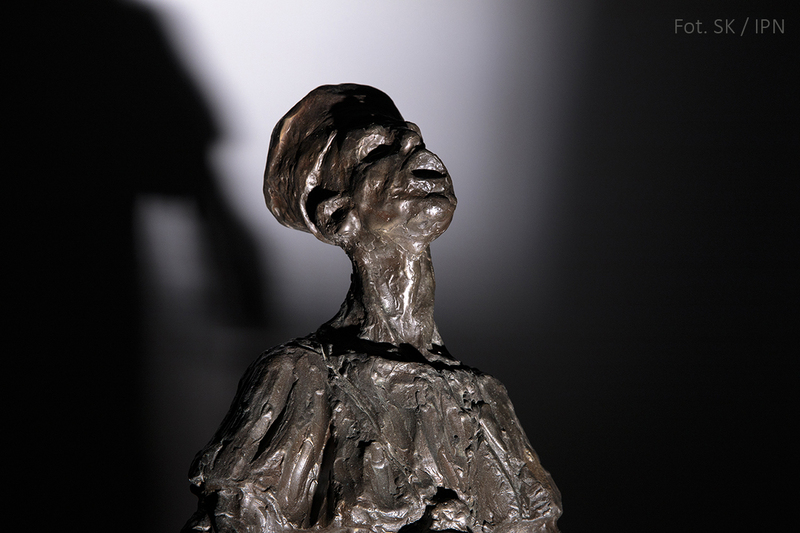
AN IMATE IN CANTOR'S GARB, BRONZE 1999 -2000 -
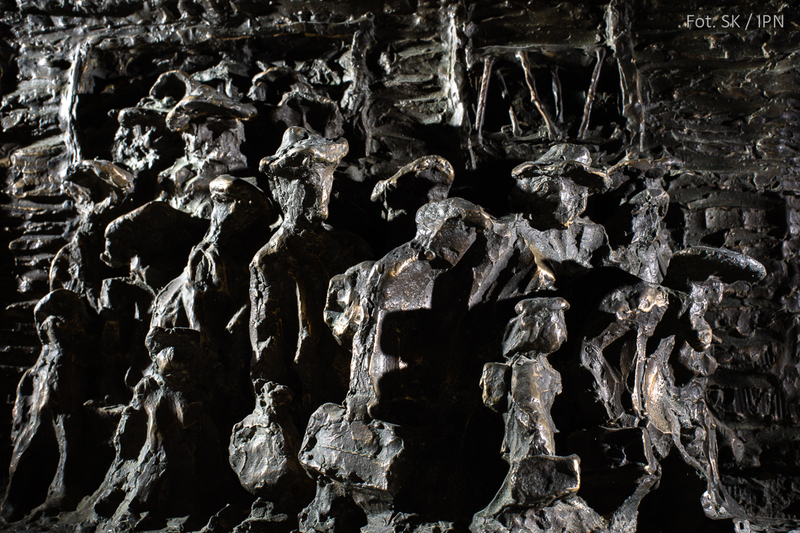
DESCENDING FROM THE BOXCAR, BRONZE 2000 -
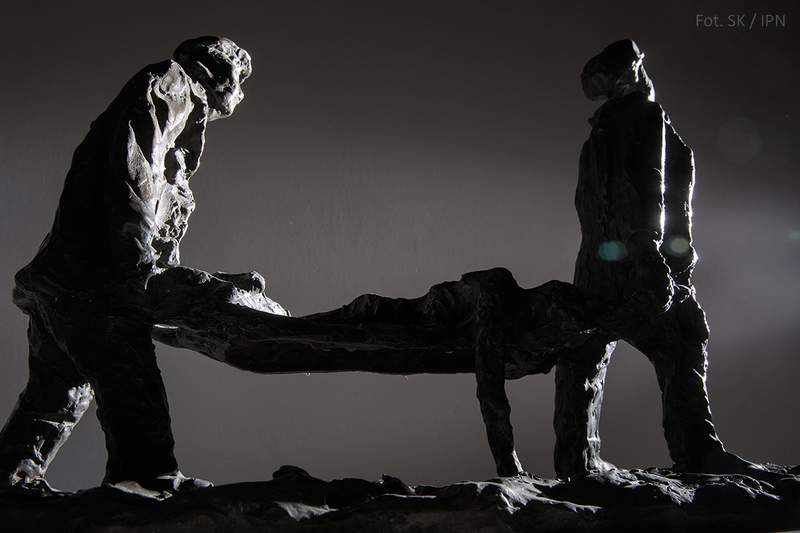
THE "BLUES", BRONZE 2001
The official unveiling of a commemorative plaque devoted to Perec and Samuel Willenberg took place at 60 Marszałkowska Street in Warsaw, on 1 August 2023, the 79th anniversary of the outbreak of the Warsaw Uprising.
The plaque, in Polish, English and Hebrew, presenting the figures of both Perec Willenberg, an artist, painter and art educator, and his son, Samuel, a prisoner and survivor of the Treblinka II German extermination camp and a fighter in the Warsaw Uprising links three important dates in 2023. They are the 80th anniversary of both the Warsaw Ghetto Uprising and the prisoners’ revolt at Treblinka, and the 79th anniversary of the outbreak of the Warsaw Uprising on 1 August.

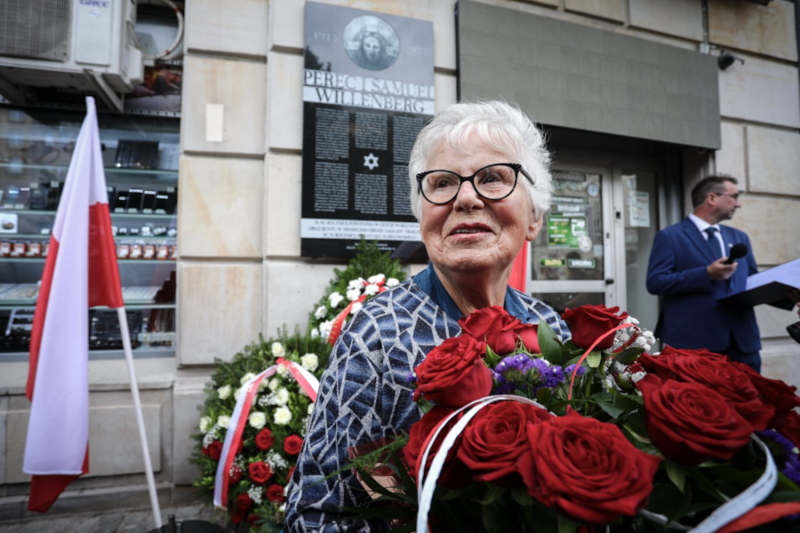
The 80th anniversary of the Treblinka II death camp prisoner revolt and the presentation of Samuel Willenberg's sculptures - Treblinka, 2 August 2023
